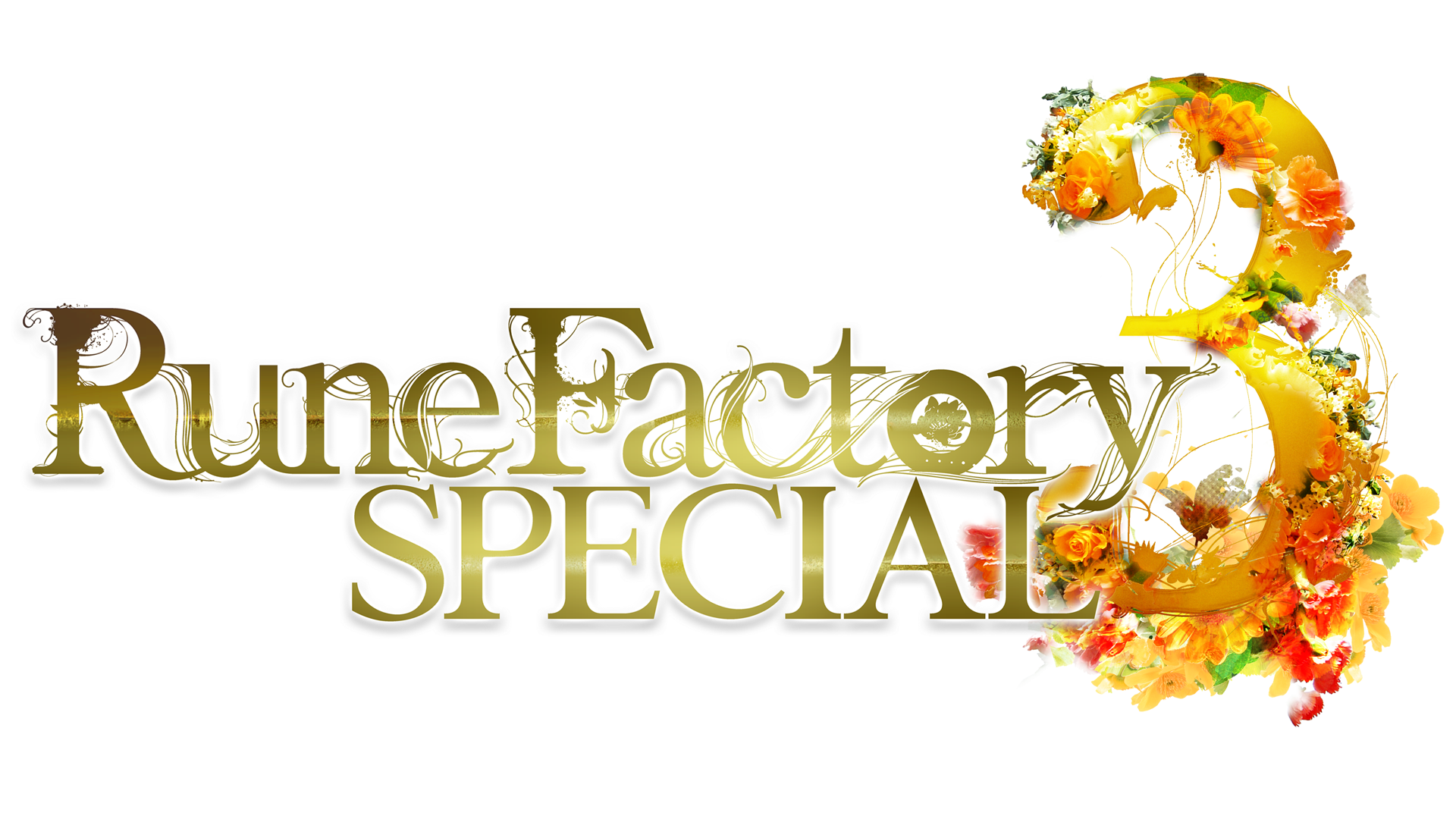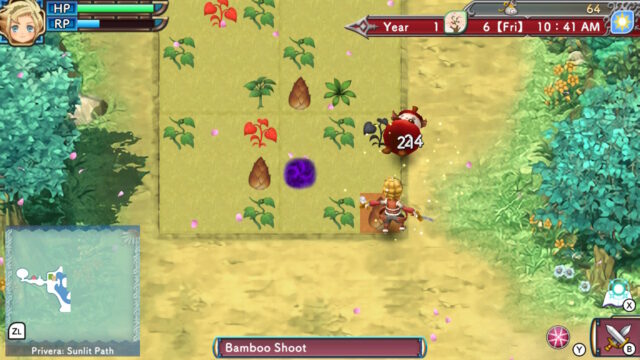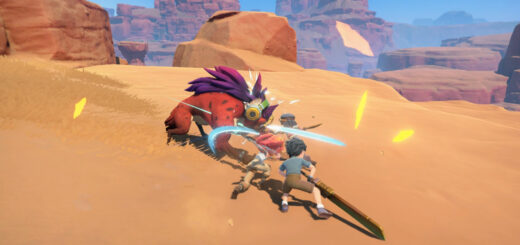Rune Factory 3 Special Review
Interspecies Mediator Needed, No Experience Required
Rune Factory as a series was likely to end the closing of its development studio, Neverland, in 2013. The IP lay fallow for many years until its publisher Marvelous raised it from the ashes earlier this decade, releasing an updated port of Rune Factory 4, a new title in Rune Factory 5, and promising two additional new titles soon. Into the midst of this newfound life for the series comes another remaster of an earlier entry: Rune Factory 3 Special. A game beloved by many series’ fans deserved an excellent rerelease, and that’s exactly what we get.
The game opens with a series staple; an amnesiac young hero wanders into the small town of Sharance and is given lodging and the responsibility for farming a plot of land. However, the Rune Factory 3 twist is that both the hero and the lodging are hiding secrets. The hero is actually half-human and half-monster, able to transform himself into a golden Wooly at will. This ability proves to be extremely beneficial since he’s now living in the gigantic Sharance tree outside of town, which hasn’t grown or blossomed in many years, ever since the humans and local monster settlement broke off friendly relations. Only a hero with ties to both races can mend what was broken long ago. The story has some pretty great moments along the way, and the resolution, while quite tropey, is done in such a way that it makes a satisfying, emotional impact. It’s up to players to grow some flowers and vegetables, regain the hero’s memories, fix the rift between humans and monsters, and romance a local lady, tasks all wonderfully blended together.
As one might expect from a game in this genre, farming starts off as prime importance. Planting seeds and harvesting crops is the primary path to making money as well as securing vegetables and flowers to give away as gifts or craft into meals and potions. The farming is quite intuitive and will be familiar to anyone who’s played later Rune Factory titles or many other similar farming sims. Individual crops have levels to them, with higher level ingredients selling for more money and making higher-rated, more effective recipes than those of a lower level. Fertilizer, and tilling weeds back into the soil, can help keep the farmland healthy enough to grow ever higher-level crops. Much like other farming sims, there is a calendar system and four seasons to plant various crops in, although if a winter crop is needed in a pinch during the middle of summer, smaller fields do exist in the game’s four seasonal dungeons.
The farming portion of the game is near the pinnacle of what the series offers, and it shows that very few additions have been made to subsequent titles. One of the only things that belies the historical age of Rune Factory 3 is the fact that crops and seeds of different levels take up different spots in one’s inventory. Later titles allow one to stack that level 5 tomato with level 3 and 4 ones, while the same combination in Rune Factory 3 and the Special remaster takes up three valuable inventory spots can fill up extremely fast when harvesting a half-dozen different crops of various levels. It’s a small, yet annoying thing encountered almost every game day. That aside, the farming is easy enough for experienced players to not need worry much about money after a couple of seasons, and newcomers can find their way almost effortlessly.
Raising animals is another pastime that can pay off not only in gathered foodstuffs and wool, but in battle partners and farmhands. After certain story beats, the local blacksmith will offer to build players a monster barn beneath the Sharance tree. Once constructed, offering gifts to local enemy buffamoos and cluckadoodles will turn them into milk and egg-producing members of one’s farm. Other animals can be befriended as well and taken into battle or put to work. As one’s friendship level with individual monsters rises, they can be tasked with watering crops and planting seeds, automating a good portion of the farming work.
Finally, if raising herds of production animals or plowing huge tracts of land isn’t one’s thing, Rune Factory 3 has some excellent fishing options. Once players get their first fishing pole, the ease of fishing in the numerous lakes, seas, and rivers can get quite addicting. The fact that this hobby, when combined with some culinary skill, can financially support players throughout the entirety of the game doesn’t necessarily invalidate the farming, it just offers players even more choice about how to spend their in-game time and personalizes many gameplay options, something that all great life-sim games should aspire to.
Dungeons are not something found in many farming sims, but make for one of Rune Factory’s main differentiators. Surrounding Sharance are four dungeons, each supporting a different seasonal climate and monsters to fight. Signs are conveniently posted in front of each, noting the recommended level to take said dungeon on and providing a roadmap for story completion. The action combat isn’t a very deep experience requiring precise dodging or a great deal of strategy in general, but is rather quick and exciting, and a vast majority of encounters can be ended by charging in and swinging fast. There are a large number of weapon types to wield that all play a bit differently, allowing players to choose one that fits their style the best. A battle near the beginning of the game tests the player’s skill and sets the battle difficulty according to how well they fare, but players can change the difficulty level at any point by visiting their home’s trophy room. Rune Factory 3 allows players to take townsfolk and monsters along with them into battle, but unfortunately the partner’s AI isn’t very good. While the base systems all work very well, it feels like Special could have spruced things up more.
Something that needed no enhancement are the RPG leveling systems in the game. With dozens of minor skills outside of fighting to upgrade along the way, virtually every action taken can lead to a dopamine-induced feeling of accomplishment when the “Skill Up!” message appears. In addition to the expected and obvious skills for each type of weapon and crafting, there are plenty that are not-so-obvious that pop up all the time. Sleeping, eating, logging, walking, resisting multiple types of status effects, and more are constantly triggered as players just go about their normal day and help to fuel the excellent “just one more day” gameplay loop.
Romance is an important part of Rune Factory 3 as certain required story beats depend on romancing a local lady. Thankfully there is a diverse collection of locals that are all written uniquely, but quite well too. Highlights include the hilarious daughter from local rich family that only speaks the opposite of what she means, the sleepy general store clerk that is always trying to avoid work, and the local fishing fanatic with an overprotective brother. The other marriage candidates and congenial townfolk are a pleasure to talk to and get to know. They keep players busy with neatly organized daily requests that help deepen friendship levels and open more excellent story bits. Some of the people are hiding secrets that they share at higher friendship levels, others open up new gameplay elements or recipes. Befriending a single marriage candidate or mainlining just what’s required is emotionally hard to do as so many NPC stories are compelling enough that many players will want to see them through to the end.
Going hand-in-hand with farming, combat, and companionship, Rune Factory 3 offers an incredibly deep crafting system. The local restaurant sells a small number of recipe breads per day that, based on player’s skill levels, teach new things to make. The sheer number of things to make at the forge, chemistry table, crafting table, and half-dozen kitchen appliances stretches into multiple hundreds, and prove useful in all aspects of gameplay. Higher cooking and chemistry skills lead to better recovery items, while increased blacksmith and crafting levels help players create better equipment for both farm work and fighting. Deep into the post-game, far past the thirty or so hours needed to clear the main story, there are always tons of new things to make.
Special does offer some upgrades. Both visually and aurally, the game is leaps and bounds above its original DS version. Graphics look crisp and detailed, in both the game world and in character portraits. The sound blends in nicely with the game world players will lose themselves in. Voice acting is limited but impactful when used, with all actors nailing the feel of the lines they’re speaking from the character they represent. Despite the original being released on DS, Rune Factory 3 Special doesn’t miss out on anything from the lack of the second screen, with map overlays able to be toggled and sized as needed. Another addition to Rune Factory 3 Special is Newlywed Mode, previously in the Rune Factory 4 Special remaster, which allows players to play a little extra story adventure with their spouse after getting married.
While Marvelous hasn’t exactly done anything except add polish to the original Rune Factory 3, it picked a great game to port to modern systems. All the charm and the excellence of the original game shines through, with only a couple of decade-old gameplay elements sticking out. The game offers a great jumping on point for those not experienced with the series while staying quite accessible to those used to the gameplay of later entries. It is an easily recommended blend of life-sim and RPG that many RPGamers can find enjoyment with.
Disclosure: This review is based on a free copy of the game provided by the publisher.


Excellent overarching story as well as multiple stand-out personal stories from NPCs
Combat is fast, furious, and rewards players that jump right in
Multiple methods of money making allow player to personalize their gameplay experience
A lovely soundtrack that blends nicely with the visually appealing game world
Deep crafting systems
Item management becomes problematic as the game progresses
NPC AI is noticeably weak in combat









Recent Comments